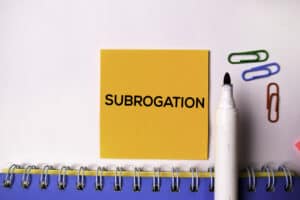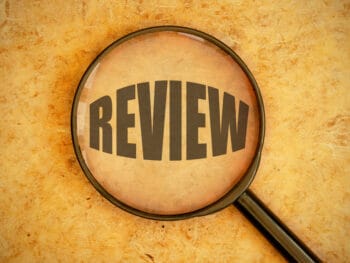
This recovery is known as subrogation.
Most claim technicians recognize the obvious automobile situation where the employee’s vehicle is struck in the rear by another vehicle. Successful recovery occurs in most of these claims.
Yet, these recoveries can be jeopardized by limited insurance on behalf of the striking vehicle. If it is limited or without insurance, the claim technician may give up trying to recover without investigating the perpetrator’s assets that might be attached or levied against.
History
Before the 1960s, almost every claim technician was trained and handled claims for all lines of property and casualty insurance losses. Most insurance carriers rotated their staff. Independent adjusters and third-party administrators had to have staffs that could handle any type of loss at any time.
Click Link to Access Free PDF Download
“8 ‘Think Outside the Box’ Tactics to Settle Workers’ Comp Claims”
Trained multi-line adjusters, who brought this knowledge to the workers’ compensation unit, could find recoveries from third parties more often and more effectively.
Why Adjusters Miss Opportunities for Subrogation
Today, adjusters tend to limit themselves to one line of coverage for claim handling. Property adjusters handle only property claims. Remaining lines, i.e. Liability, Auto, A&H, Workers Compensation, etc., are also handled by specialized technicians. It is getting harder and harder to find multi-line adjusters.
Added to limited knowledge and experience is training. Insurance company training departments are non-existent or limited. Most training today takes place on the job. It may be done by experienced fellow adjusters or supervisors. The training is usually limited to the line of claims being handled.
These two points mean many workers’ compensation adjusters don’t know or think of subrogation potentials.
Other factors limiting subrogation recovery are missing Statute of Limitation dates, failure to file appropriate liens, and failure to take over the employee’s rights when they do not pursue a claim. Many adjusters give up trying to recover as soon as they may be told no by the third party.
Adjusters fail to seek other assets when the third party has insufficient or no insurance. Inappropriate waivers of liens and failure to take credit for funds the claimant receives from the third party. Finally, adjusters may omit subrogation on small-value compensation cases.
Subrogation Sources
Some recovery potential may come from coverage issues, liability exposures, contract obligations, and warranties. (Legal departments must obtain, read, interpret, and evaluate contracts.)
Research into required warnings, instructions, hold harmless agreements, service and maintenance programs are other arenas where a third party can become liable. Food product contents should be explored for toxicity. Machines and tools must be evaluated for mechanical dangers, safety devices, and malfunctions. Chemicals used by employees need review for compliance with Safety Data Sheets.
Power sources and fuels can be explored for possible dangers, operations, or extenuating situations.
Investigating Subrogation
Actual observance of the loss scene gives an edge in determining the claimant’s veracity and allows for a more thorough investigation. Adjusters need to gather and preserve evidence with the proper chain of handling.
Photographs, diagrams, labels, contracts, instruction methods, maintenance records, statements from all persons involved , police reports, EMT records, fire department reports, newspaper accounts, safety data sheets, and an autopsy report (if done) are just the basics for subrogation potentials.
Another overlooked area for subrogation is the medical aspect. Malpractice, underlying pathologies that may have other treatments, and previously compensated funds for like or the same injury are just a few areas to investigate.
Subrogation Audits
All facets of workers’ compensation loss management require regularly scheduled claim auditing of the claim units. Subrogation review is usually a part of the audit. However, a special subrogation audit may be warranted if employees are exposed to offsite travel, work, and other exposures where subrogation is a potential.
Summary
Subrogation recovery is being missed by many of today’s adjusters. Many subrogation potentials are available to the employer. Subrogation recovery requires exploring potential, proper investigation, and vigorous pursuit.

Contact: mstack@reduceyourworkerscomp.com.
Workers’ Comp Roundup Blog: http://blog.reduceyourworkerscomp.com/
©2022 Amaxx LLC. All rights reserved under International Copyright Law.
Do not use this information without independent verification. All state laws vary. You should consult with your insurance broker, attorney, or qualified professional.







